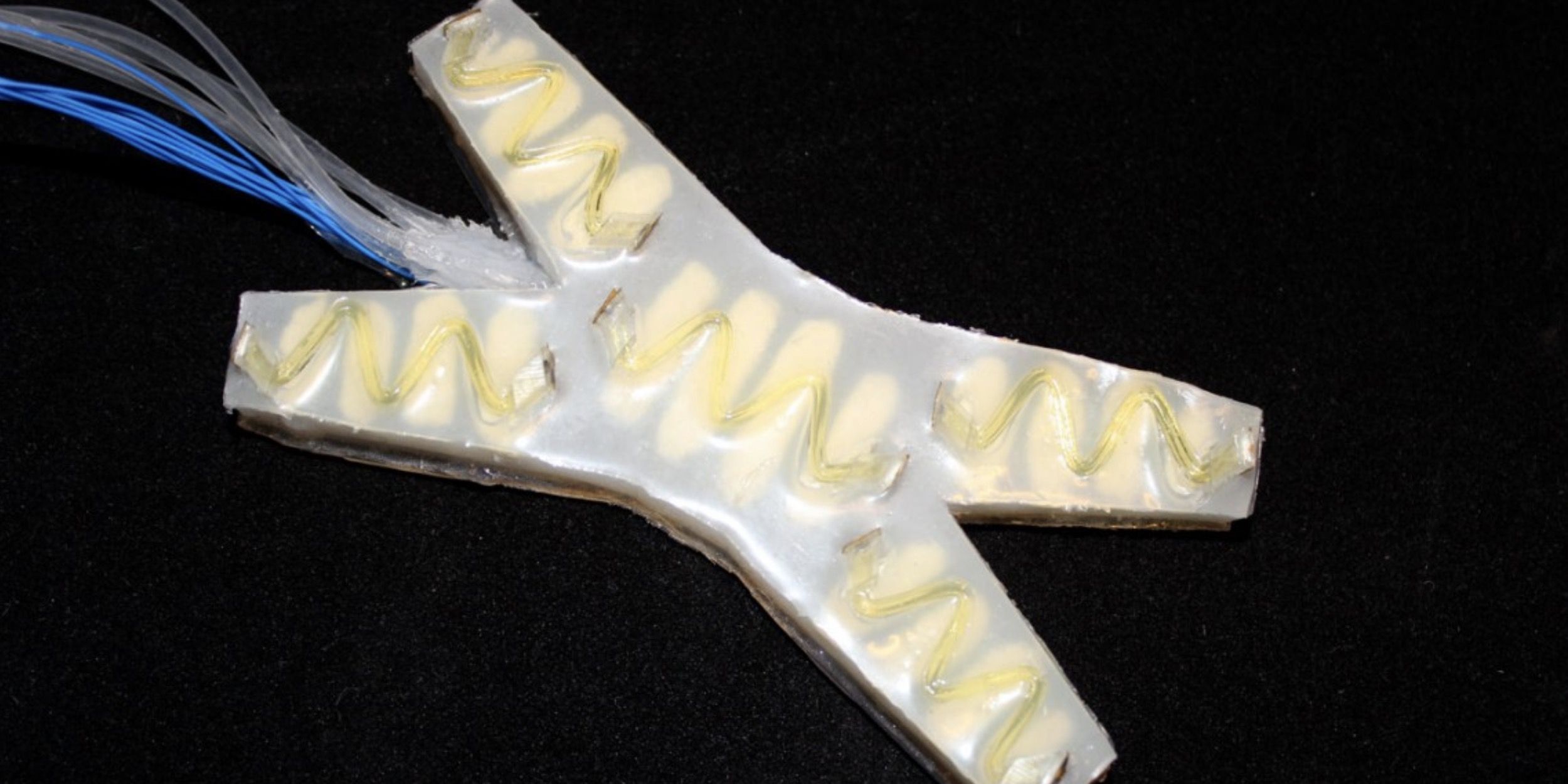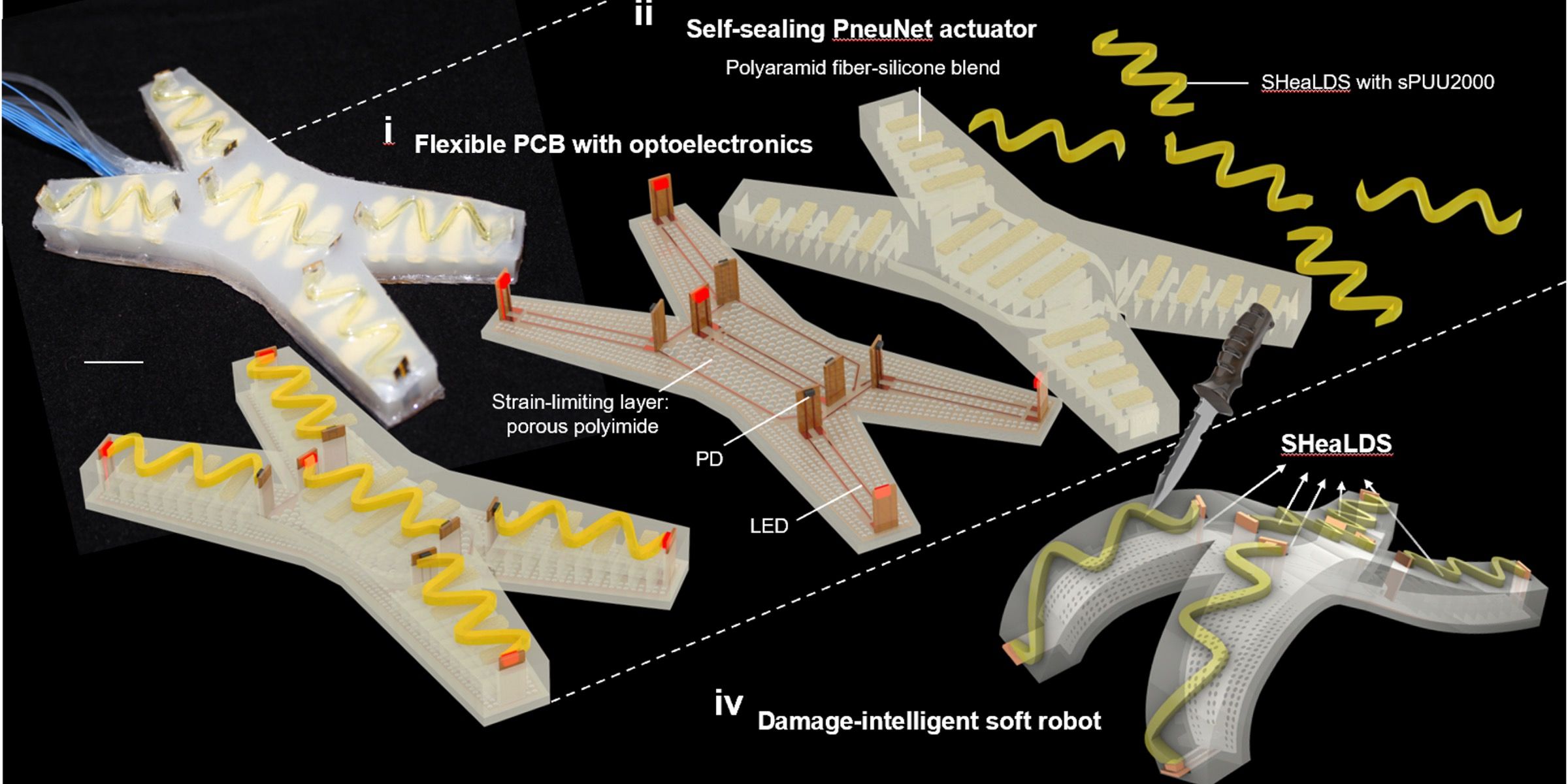Autonomous robots are the talk of science town these days, but a team at Cornell University now claims to have developed a soft robot that not only detects damage but also heals on its own within minutes. Now, the domain of soft robotics is no stranger to such seemingly miraculous innovations. In 2021, researchers in Singapore showcased a material called AiFoam — short for artificially innervated foam — that has similar properties. Made out of an elastic polymer with surface tension-lowering properties, pads made out of the material can heal if they are cut.
The goal is to put them on robotic appendages so that they can survive general wear and tear. Meta, for example, could benefit from such materials. The tech titan is working on its own 'artificial skin' material called ReSkin that is quite sensitive to external stimuli and will make robotic limbs less clumsy. Meta demoed its skills by having robotic thumbs pick up a grape without squishing it to a pulp. But the biggest problem is combining sensing as well as healing into the same package. A group at Cornell appears to have cracked the code.
Say hello to self-healing light guides for dynamic sensing (SHeaLDS), a system made up of "a tough, transparent, and autonomously self-healing" polymer and optical waveguides that can detect a surface injury and heal it, too. Let's start with the sensing part first. Robots are basically a network of wires that send signals from one region to another. If wires leading to the limb are damaged, the robotic brain won't know it has sustained injuries that need to be fixed. Optical waveguides, which rely on light to relay information, can still transfer the information if they are cut or punctured. This special kind of optic fiber developed at Cornell can also stretch, and is tailor-made for soft robotics.
Find It, Fix It, All In Minutes
The next step is to engineer things in a way that the same system can sense its environment for accomplishing various pre-programmed tasks and also heal itself when needed. To achieve that, the team bonded these special fiber optic sensors with a self-healing polyurethane urea (sPUU) elastomer. When applied on quadruped starfish-like robot and stabbed multiple times with a knife, the system healed itself within a few minutes at room temperature. Plus, it didn't need any external guidance to do so. The healing happens at a molecular level using sulfur and hydrogen bonds.
During the tests, the team found that even if the damaged part is exposed to water, most of its self-healing capability is still intact. The research paper, which was published in the ScienceAdvances journal, notes that SHeaLDS' healing properties can be enhanced with controlled heating. It also pushes forward the idea that nanoparticles allowing light-dependent heating could one day be embedded in the system to accelerate the healing process. The final goal is to achieve something similar to physical intelligence in animals. This damage intelligence in robots could prove to be extremely helpful for damage-prone scenarios such as making space suits, parachutes for spacecrafts, wearables, and machines operating in harsh environments.
Source: Cornell Chronicle, ScienceAdvances


